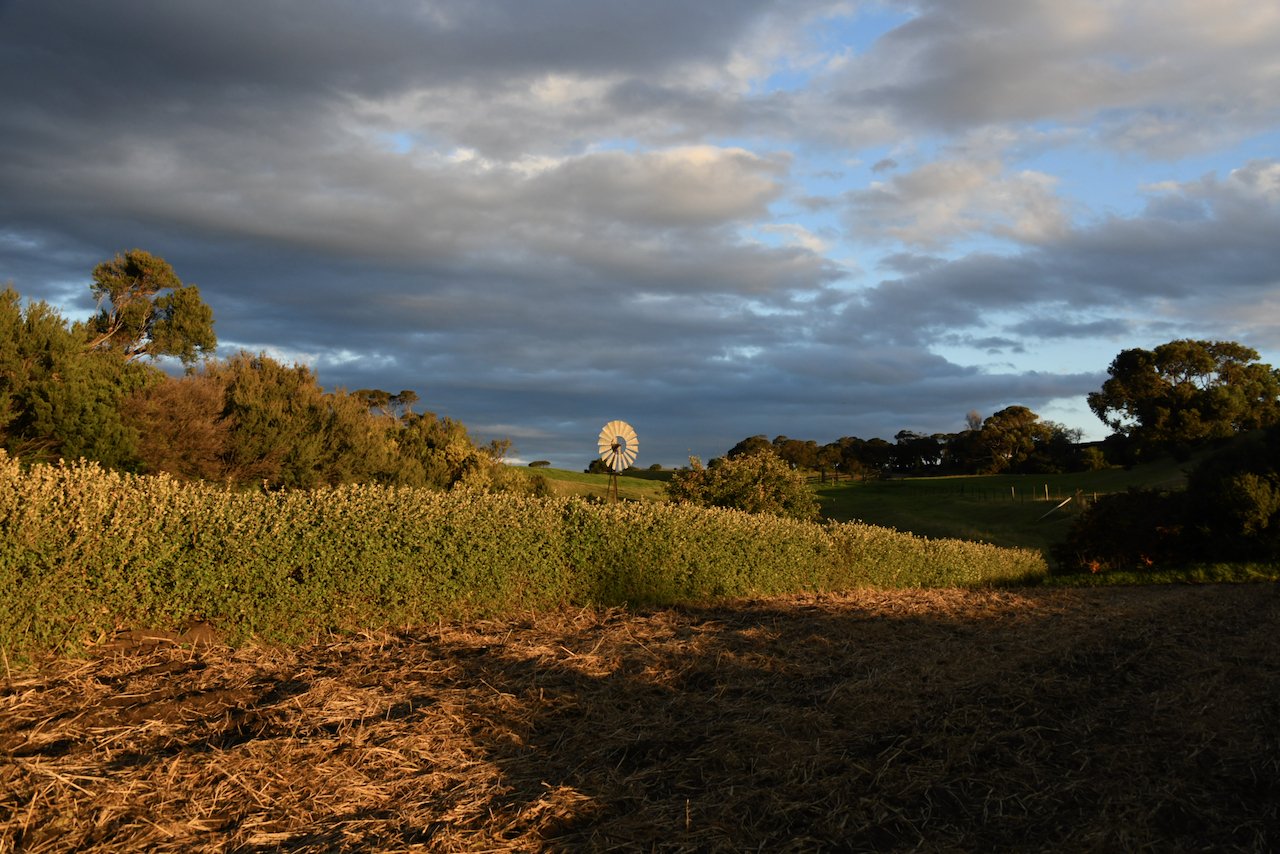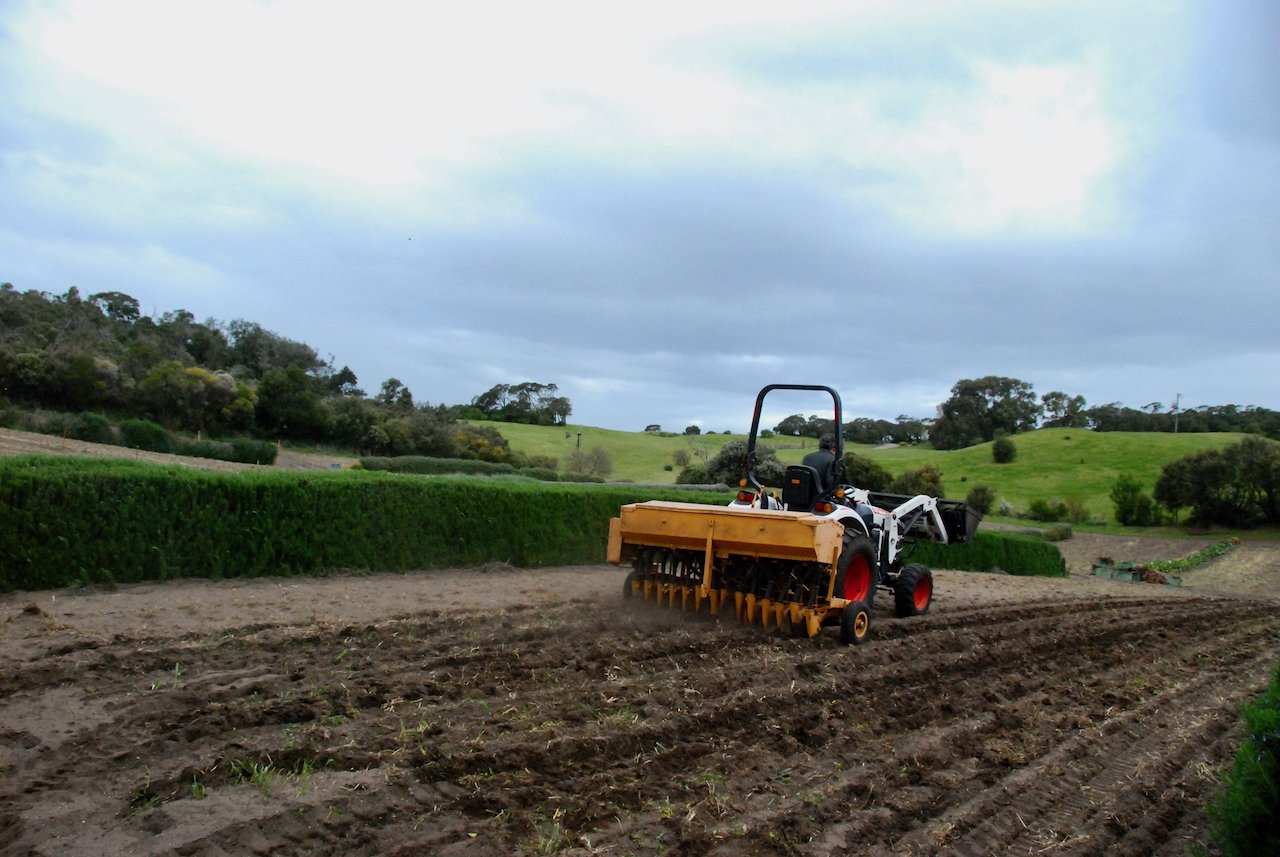Autumn Tips for Vibrant Plant Health
/Our growing season does not begin with the first crop seeds sown - It begins now in Autumn, the time of digestion, with the incorporation of finished crops and summer green manures, the building of compost piles, the cleaning of this season's seed. We reflect and evaluate our soil.
The beginning of vibrant plant health and consequently flavour begins with soil and Autumn is the best time to start.
Our soil, its health, biological activity and the dynamic diversity it houses is the basis of all of our growing endeavours - and the pursuit of optimum soil occupies our thoughts and observations. What drew us to bio-dynamics was the following quote, “The Australian Demeter Bio-Dynamic Method of Agriculture, produces healthy, living, structured soil. Healthy plants, animals and humans are a result."
Autumn is the time to really look closely at your soil, support, renew and protect it.
WHAT IS SOIL
Organic matter, a slew of living organisms, trace minerals and the relationship between these and plants is exhibited and housed within living soil.
Plants sustain and proliferate living soil JUST AS living soil support and create healthy, nutrient rich plants.
Organic matter, top soil, subsoil and parent rock that make a true soil profile work together as a community with plants that are photosynthesizing. It is this community and the give and take occuring within it that makes the difference between living soil and dirt.
We believe that soil contains alot of trace minerals just waiting to be in relation with the right biology so as to be accessible.
We believe, and soil science is proving, that there can be too much of a good thing. Even compost can not only contain harmful “forever chemicals”, it can also be over added causing toxic build up and damage to water systems. You may be able to layer alot of materials together that look like dirt but can they replicate humus - the dynamic habitat in which the multitude of soil organisms, fungi and bacteria thrive and interact with plants?
Life begets life and health begets health. There is a reciprocity in nature - enlivened soil and intact plant intelligence working symbiotically. This is supported and enhanced through the Australian Demeter Bio-dynamic method. This is a method of doing and the best place to start is a field day.
Here is what we are curently doing at Transition Farm to encourage and enhance the natural processes that happen in Autumn, nurturing our soil, protecting it from winter weather and preparing it for the next growing season.
Improve soil compaction
Even on our sand dune, compaction can occur. Oxygen is the basis of much underground soil life too. Aerating with a broad fork or sub soil tine cracks the compaction, bringing in life giving oxygen, allowing for water and plant root penetration into the subsoil layer where they can access different minerals and nutrients. Soil structure and tilth, even in our fragile sandy soil, one can still see the amazing form in the soil created by the fine white feeder roots of plants, the natural attraction of soil particles to each other, the colour and smell of life. The formation of a strong humus layer which will bind minerals, nutrients and water providing for healthier plants and buffering soil in extreme weather begins with oxygen and autumn is a great time to break through compaction.
With compaction broken by a tine, plants can also greatly add in breaking up compaction. Green manure additions of deep rooted crops such as daikon, alfalfa or lucerne, an/ or rye grass may also help.
Add mineral and manure additions now ahead of a cover crop or green manure
The earth, with its innate power of transformation, combined with living plants can help digest "raw" additions, be them mineral amendments or manures, incorporating these into the humus layer for access to crops who may need them later. Autumn is the time to make additions for rebalancing. We add any manures and minerals ahead of a cover crop or green manure.
Not only are we ensuring that the additions are being thoroughly incorporated throughout the soil profile, by providing a green manure crop with optimum growing conditions, we are also using the robust crop that will take off in the warmth of autumn as a catch crop, trapping any water soluble additions which could effect waterways by running off in heavy rains. This vibrant crop will feed and protect soil life and when incorporated in the spring, will provide a large amount of organic matter back to the soil.
If you are unsure if your soil needs anything, a soil test may offer help. DESPITE the confusion that soil tests may bring, they can be a useful tool. While we believe in the biology of soil, and a soil test can be more like a chemistry analysis, it is useful to look at the relationships identified by a soil test. A plant's health lies in its ability to ACCESS different minerals - many in small amounts. It is NOT all about N-P-K! And relationships can be effected by imbalances.
Chose a company that can offer you an analysis of the test. We must admit that for us, biology will always trump chemistry when it comes to understanding living soil. As such, we put much more emphasis on nuturing the living system that embodies our soil. And there are unprocessed minerals, such as rock phosphate, which are slow release, non water soluble additions that greatly improve plant health.
Sow cover crops or green manures
A mixture of legumes, grains, medics and flowers provide a bio diverse enviroment for soil insects and invertebrae, bacteria and mychrozal fungi. These are all the important inhabitants of soil and providing them with a diverse diet in turn will provide your future crop with living soil full of accessible nutrients.
Green manure crops are as important if not the most important crop on our farm. They are the food for all our other crops. We believe that building our humus layer through green manuring, using bio-dynamic prepared 500, gentle and conscious incorporation trying to enhance and protect our soil structure, offers the next generation of plants "a bank" as Alex Podolinsky called it. This bank is then available to the plant that needs it.
The plants in our bio-dynamic system use sunlight to guide their own health. The desire of plants to thrive feeds the soil life below. Life attracts life and the thriving green manure crop begins this process. Our soil life is fed until the soil cools, the sunlight reduces and many organisms hybernate through winter. The green manure crop covers and protects the soil even when not actively growing. As the sunlight returns to the south in July, the green manure is ready to photosynthesize, sending life giving sugars to the soil life, activating it early so that it is thriving before we begin transplanting the first crops of the late winter/early spring.
An easy green manure winter mix is field peas, vetch, oats, clover, fava beans and rye grass. There is so much more to include and we highly suggest diving deeply into green manure research if it inspires you!
Make Compost
With so much raw material available in Autumn, and nature providing a strong digestive force, this is a great time of year to make a compost heap. While in the fields we use the above described methods to make compost “in situ”, we use compost in our propagation mix and make one large heap each autumn for that purpose.
With the green matter of finished crops and mowed grass, mixed with wood chips, threshed seed crops and spent straw, manure, rock dust, lime, and organic household waste. We thoroughly mix these components, ensuring the pile is kept moist. And we add the bio-dynamic compost preparations.
We believe that our compost heap is a microcosm or a concentration of all the soil life found on our farm. By making our own compost and using that in our propagation mix, plants begin building the relationships that will serve them throughout their life, from the moment the seed cracks!
This is a topic in its own right and again, an Australian Demeter bio-dynamic field day may include the making of a compost heap.
WHY FOCUS ON SOIL
Ultimately, a plant with vibrant health is not only more pest and disease resistant, it also produces better tasting produce that is more nutrient dense with higher yields. It is far less work to support the natural system so that plants can thrive then to try and combat pest, diseases and struggling plants. Nuturing soil now is the best beginning to our next growing season.
ADDITIONAL RESOURCES
-The following companies offer soil testing:
-Australian Demeter Bio-Dynamic offers books and DVD’s
-EcoFarming Daily has many articles:
Books - This is not an exhaustive list…just ones that came to mind
Mycorrhizal Planet By Michael Phillips
The New Organic Grower by Eliot Coleman
NOFA Guide: Crop Rotation and Cover Cropping: Soil Resiliency and Health on the Organic Farm by Seth Kroeck
Please share other resources you find helpful in the comments below



















